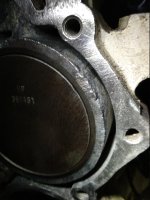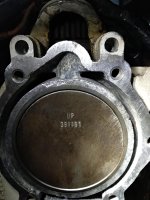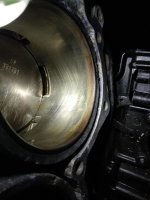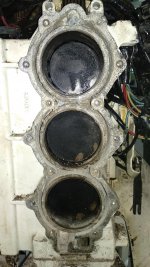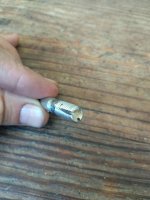puretic
Member
Hi everyone,
I'm about to install a new head gasket on my outboard.
The one I just removed was the type with several small holes in between the bolt holes. The one I removed from my donor/parts motor did not have this.
It seems to be a design flaw to have the holes, as they allow water to come into contact with the flat head surface, and let corrosion sneak in around the gasket. The head was in fairly poor condition, compared to the head on the donor motor.
I just purchased one online and according to the seller, the type with the holes is the only one he has ever sold, but I'm having second thoughts about using it.
Any wisdom appreciated!
Thanks,
Ben
I'm about to install a new head gasket on my outboard.
The one I just removed was the type with several small holes in between the bolt holes. The one I removed from my donor/parts motor did not have this.
It seems to be a design flaw to have the holes, as they allow water to come into contact with the flat head surface, and let corrosion sneak in around the gasket. The head was in fairly poor condition, compared to the head on the donor motor.
I just purchased one online and according to the seller, the type with the holes is the only one he has ever sold, but I'm having second thoughts about using it.
Any wisdom appreciated!
Thanks,
Ben


